
10 perennial plants flowering in late spring
Discover our selection
Contents
Some perennial plants wait until late spring to flower, once weather has warmed sufficiently. Flowers presented here usually bloom in May–June (sometimes from April or as late as July, depending on variety), but that also depends on where you live: in cooler regions these plants will probably bloom a little later, in early summer, while in warmer regions they may bloom earlier in spring. This page presents the most beautiful perennials that bloom in late spring and offers some tips to grow them successfully. Feel free to combine them to create colourful borders. You can also plant them alongside perennials with decorative foliage, such as ferns, grasses, hostas…
Columbines
Columbines, or Aquilegia, are charming perennial plants that offer a delicate flowering, often in May–June, or in early summer. There are numerous species, with flowers declinate in a rich palette of colours: yellow, blue, red, purple, pink, white… They can be solid-coloured or bicoloured, for example tinged with white. Flowers are most often single, but some varieties have double flowers, which then resemble small pom-poms. Their finely divided leaves are also appreciated. Delicacy of their flowers and foliage might suggest a fragile plant… yet columbines are truly all-purpose plants! They are undemanding, able to grow in sun as well as shade, proving hardy and robust. Thus they adapt to many situations. And as if that were not enough, they tend to self-seed and can naturalise! Columbine is an ideal plant for beginner gardeners.
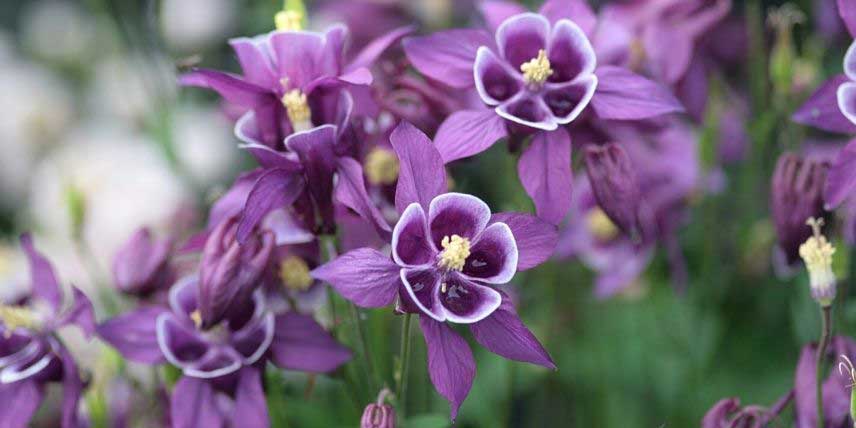
Delicate purplish flowering of columbine ‘Winky Purple White’
Alliums
Alliums are notable for their spherical umbels, often violet, blue or purple, which vary in size depending on the variety. They flower between April and July, but for flowering in late spring, in May–June, we particularly recommend Allium ‘Purple Sensation’, which produces beautiful purple spheres, Allium ‘Mount Everest’, with white flowers, ideal for graphic, pared-back gardens, or Allium christophii, whose flowers form large, perfectly shaped stars gathered into enormous spheres. You can also choose Allium caeruleum, which forms small blue spheres. Alliums are bulbous plants that are easy to grow and tolerate poor, stony soil. They are particularly sensitive to standing moisture and therefore need well-drained soil. They are planted in autumn at a depth of 10–15 cm.
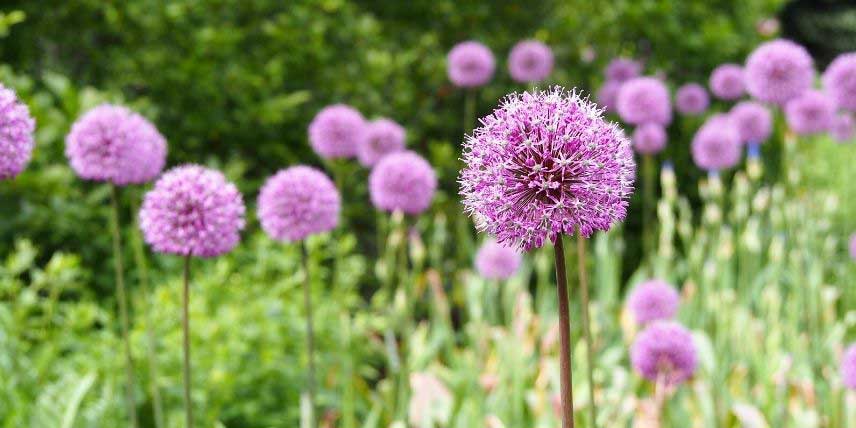
Spherical umbels of Allium ‘Purple Sensation’ (photo Agnieszka Kwiecień, Nova)
Discover other Spring flowering perennials
View all →Available in 0 sizes
Available in 0 sizes
Available in 0 sizes
Available in 1 sizes
Available in 1 sizes
Available in 2 sizes
Available in 0 sizes
Available in 1 sizes
Available in 2 sizes
Available in 1 sizes
Bleeding Heart
Bleeding Heart, or Dicentra spectabilis, is a charming perennial bearing heart-shaped flowers, suspended beneath the flower stems. They are most often pink, but can also be white, even red. Flowering lasts 3 to 4 weeks, often in May–June. They are among the most delicate and romantic spring flowers! Bleeding Heart also has very attractive finely divided, tender green foliage with a lush appearance. It is deciduous. Dicentra has a very romantic yet natural habit, and fits well into English gardens. It is ideal as a companion to other plants with soft-coloured flowers and generous foliage, such as ferns, hostas, Brunnera macrophylla… It is a plant of cool shade, which dislikes summer drought but also stagnant moisture in winter. Once established, it does not like to be moved, but can live for a very long time!
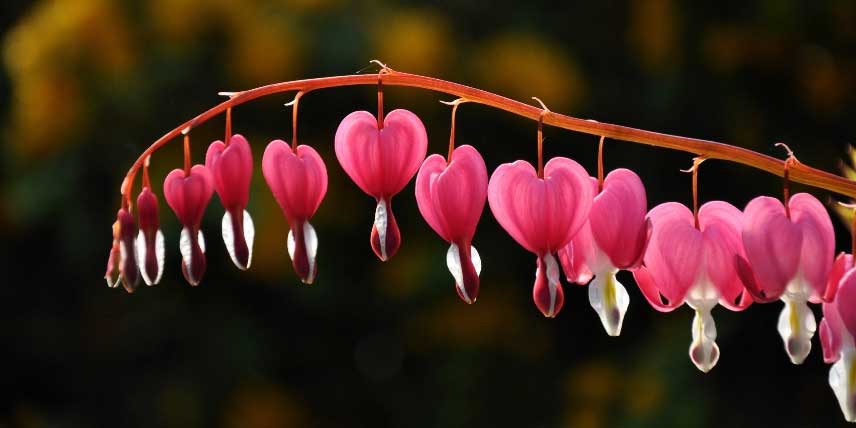
Heart-shaped flowers of Dicentra spectabilis
Oriental poppy
With its large crumpled flowers, oriental poppy creates an impressive effect in borders. Its flowers are often pink, orange, coral, plum, red… in pastel shades or bright colours. There are often very beautiful black maculate markings at the centre of the flower that nicely enhance the flowering! This perennial has larger flowers than other poppies. Ideal in natural-style gardens, cottage gardens and romantic gardens. Despite its fragile, delicate appearance, it is very robust and quite hardy (between −20 and −30 °C). It thrives in full sun, in well-draining soil. Although slow to establish, it lives for quite a long time! It’s a trouble-free plant that doesn’t really need attention. Moreover, when it is happy, it sometimes self-seeds in the garden!
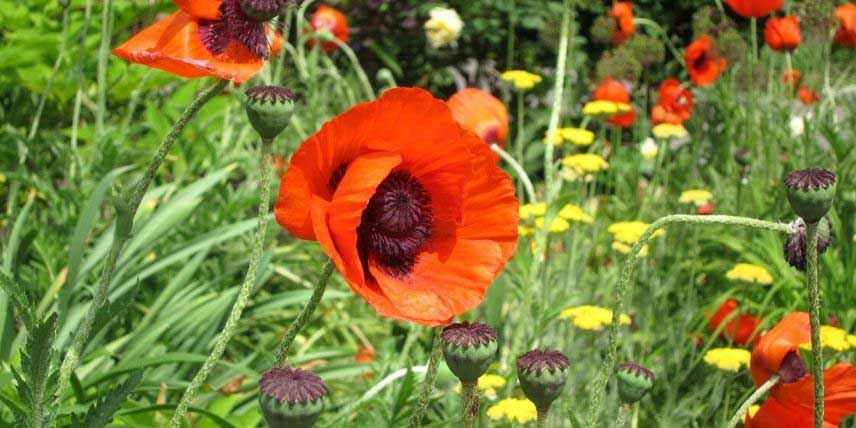
The delicate flowers, with very light petals, of oriental poppy ‘Prince of Orange’ (photo cultivar413)
Japanese primrose
Very different from other primroses, Japanese primrose (Primula japonica) stands out with its tall flowering stems topped by whorled flowers in pink or white. Leaves, arranged in rosettes at ground level, are ovate and a lovely light green. We recommend varieties ‘Miller’s Crimson’, with fairly deep purplish-pink flowers, or ‘Alba’, with white flowers. It is a shade to semi-shade plant that grows in cool, humus-bearing soil. It also prefers slightly acidic soils. In the garden, pair with bleeding hearts, Tiarella, ferns and hostas…
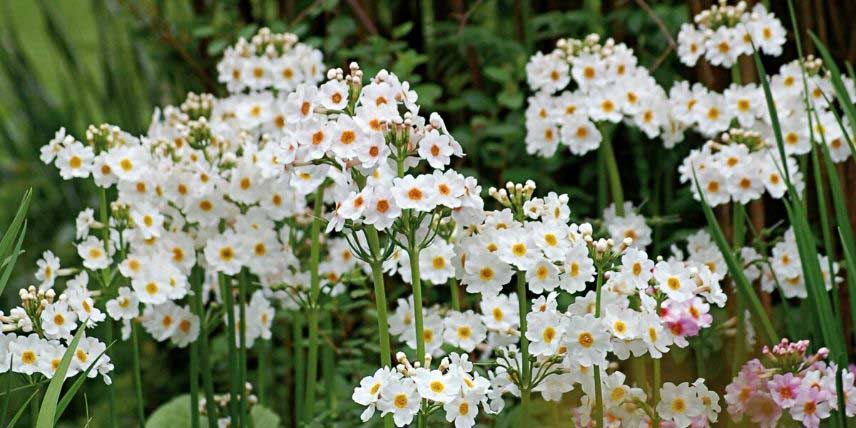
Elegant white flowering of Primula japonica ‘Alba’
Persian buttercups
Asiatic ranunculus, or florists’ ranunculus, produce very rounded flowers with many imbricate petals. Their bright hues and wide palette of colours are much appreciated: yellow, orange, red, pink, green, white… Their forms are reminiscent of rose flowers. They can flower for up to six weeks and are ideal as cut flowers for creating bouquets! They also last a long time in a vase. Asiatic ranunculus develop from an underground tubercle, and each tubercle can produce around ten flowers. In the garden, you can plant them in beds, as borders or in pots. They need fertile, well-draining soil that is not very calcareous, and a sunny or partly shaded position. They require little maintenance but are fairly tender (down to −10 °C).
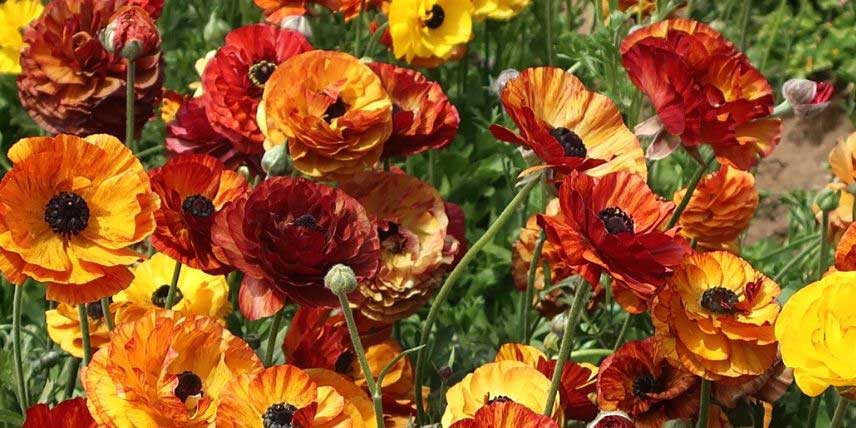
Warm flowering display of Ranunculus asiaticus Tecolote Giant® ‘Café’ (photo cultivar413)
Globeflower
Globeflower offers very bright flowering, yellow or orange, in globose buds, which resembles buttercup flowers. It belongs to the same family, Ranunculaceae. It usually flowers in late spring, in May–June, but flowering can sometimes continue until late summer. Flowers measure between 3 and 5 cm in diameter. It also has attractive palmate, deeply divided leaves. One species is found in the wild in France, Trollius europaeus, which grows in mountainous regions. The flowers are borne atop long flowering stems, giving an impression of lightness. It is an ideal plant for a naturalistic garden! As for cultivation, it requires soil that stays cool to moist, and is perfect for pond edges. For exposure, plant in partial shade or in non-scorching sun.
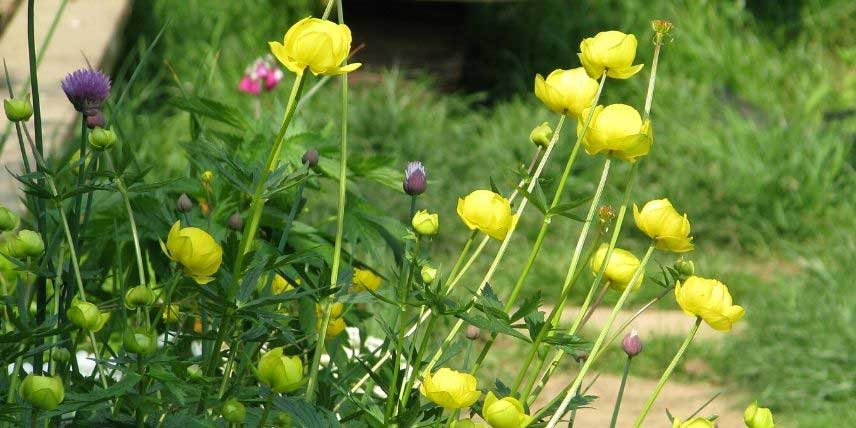
Yellow flowers of Trollius europaeus (photo peganum)
Polygonatum
Solomon’s seal, or Polygonatum, is a woodland plant that forms arching stems and bears beneath them delicate trailing white bell-shaped flowers. They are followed in summer by ornamental fruit: spherical bluish-black berries. It also has magnificent ovate leaves of a lovely green, very regularly arranged along the stem. Some varieties, such as the Polygonatum falcatum ‘Variegatum’, are variegated. Solomon’s seal is a deciduous plant: its foliage disappears in autumn due to cold and regrows in spring. Its flowers and foliage somewhat resemble those of lily-of-the-valley, although it is a larger plant. Also, like lily-of-the-valley, Polygonatum spreads via its rootstock and can form attractive colonies. Its very natural, wild habit is appreciated! It is also encountered in forests in France. In the garden, it is perfect in the shade of trees and bushes, alongside ferns, sweet woodruff, Brunneras, hostas…
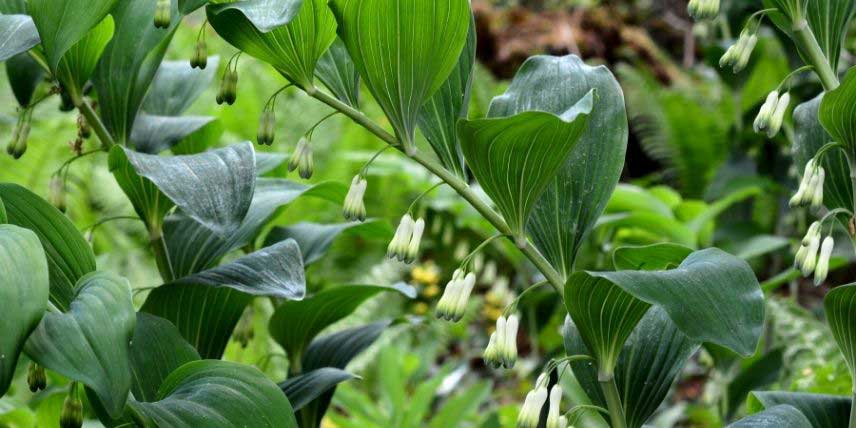
Leaves and bell-shaped flowers of Polygonatum multiflorum
Herbaceous peonies
Peonies are valued for their large, very romantic flowers, available in beautiful shades of pink: from pinkish white to deep red or purple, even salmon. The flowers are often composed of many imbricate, slightly crumpled petals, creating a frilly appearance. There are also peonies with single flowers, revealing a central cluster of stamens. Herbaceous peonies, derived from Paeonia lactiflora, flower in late spring, in May–June, while tree peonies bloom slightly earlier, in April–May. Their flowers generally measure between 7 and 20 cm in diameter. Their foliage, attractively divided into leaflets, is also appreciated. It is deciduous and therefore disappears in autumn due to the cold. Peonies are quite slow to establish and begin flowering, but they have great longevity. They prefer non-scorching sun or partial shade, and require deep, rich soil, fresh but well drained, and rather calcareous. They tolerate heavy soils well.
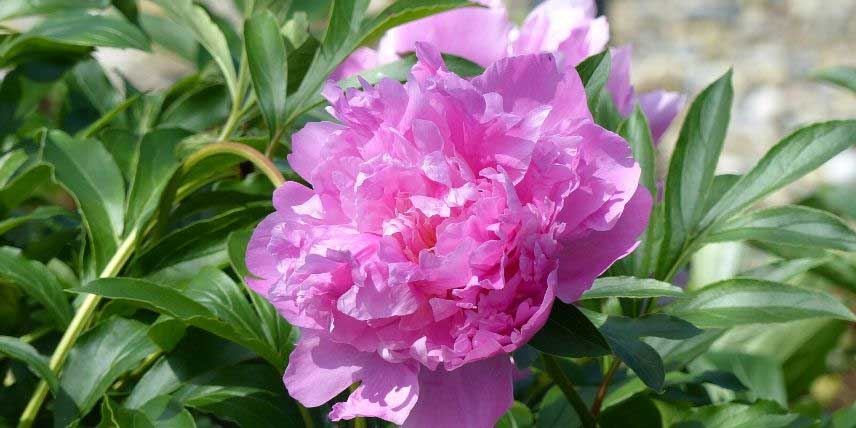
L’opulente floraison de la pivoine Paeonia lactiflora ‘Monsieur Jules Elie’
Baptisia
Baptisia, also called indigo lupin, is a large perennial that bears flowers in late spring, gathered in long upright spikes. They are most often a beautiful deep, intense blue, but can also be yellow, chocolate, purple, white… Its superb foliage is also appreciated, nicely divided into three leaflets, a bit like clover leaves. When flowering is over, Baptisia produces pods, which are also decorative. It forms an imposing clump, measuring between 1 m and 1.50 m in height. It is an ideal plant to add volume to borders! In the garden, it prefers full sun in fairly dry soil. Easy to grow, it is a trouble-free plant, undemanding and long-lived. It tolerates poor soils, cold and drought, and is not prone to disease. It therefore requires almost no maintenance!
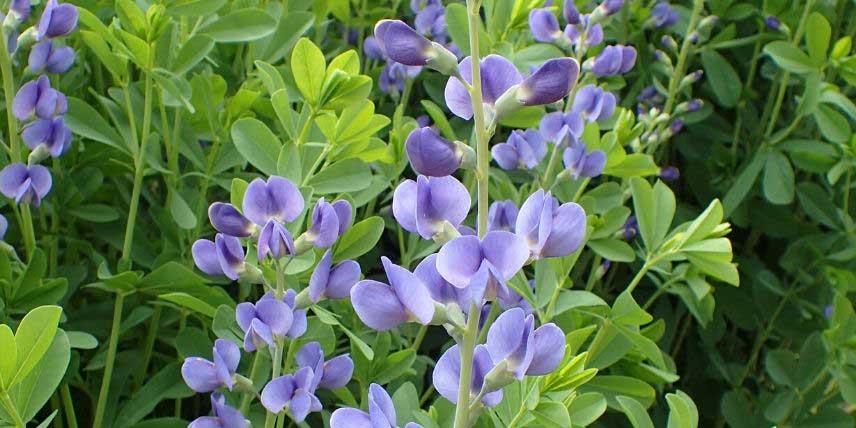
Blue flowers of Baptisia australis (photo Krzysztof Ziarnek, Kenraiz)
- Subscribe!
- Contents
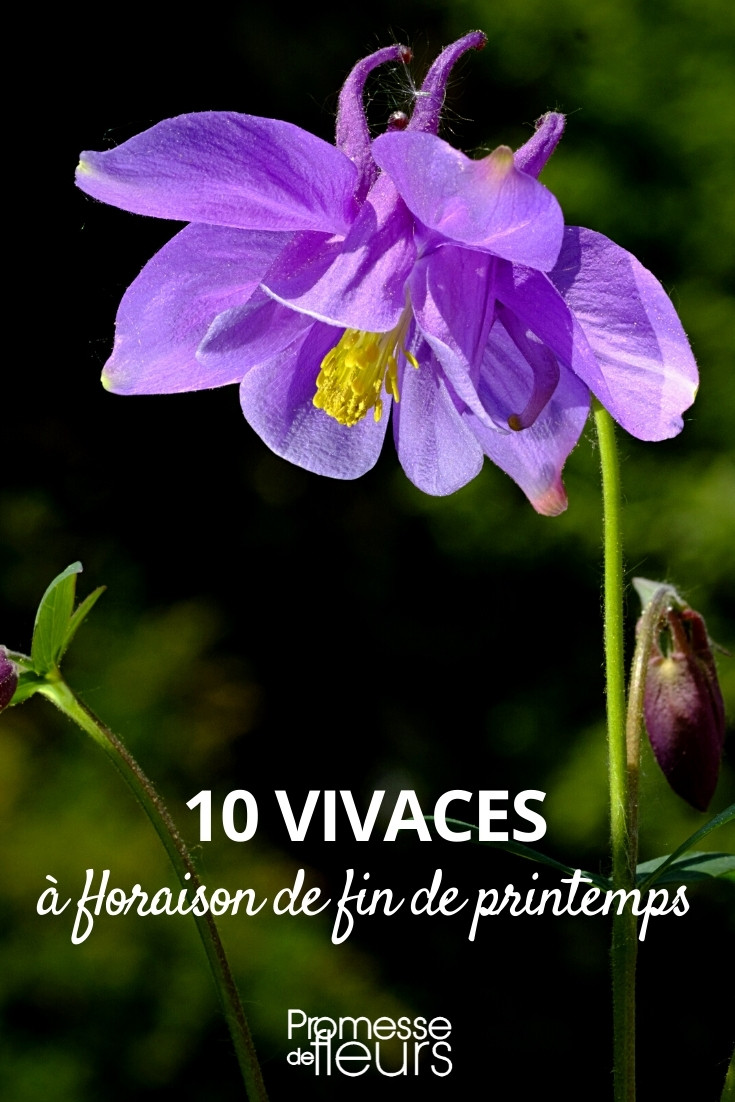
































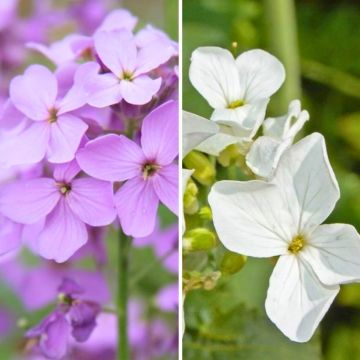

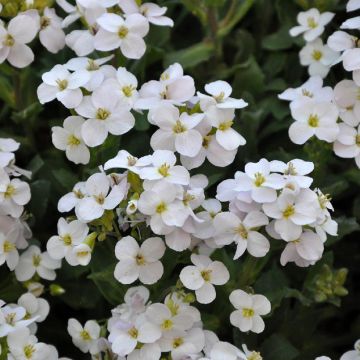
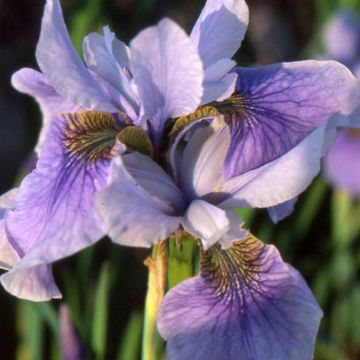
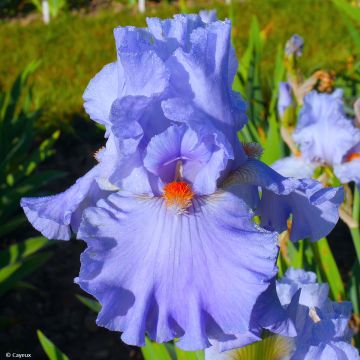

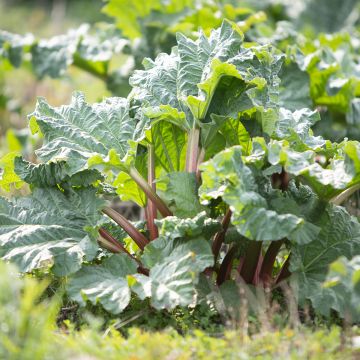

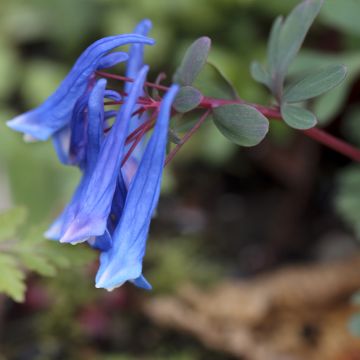
Comments